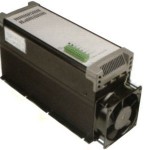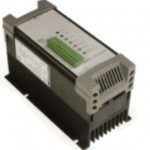-
SCR Selector
Phase Selection Got a question?
-
Need more help? (310) 896-8261
-
Information
Shopping Cart
Your shopping cart is empty
Visit the shop
Author Archives: admin
Protecting your SCR from High In-rush Currents
Current Control SCR for Variable Resistance Loads
Our new SCR power controllers offer a performance and precision never seen before as well as at a lower cost than anything prior. Quantum SCR Current Control SCR eliminate blown fuses and semiconductor failures by using special built in circuits that allow you to dial in a kick off point before the fuse has a chance to blow. This can save you hundreds of dollars very quickly. It is not unusual to spend $40 or more for a single fuse when you suddenly blow one, and what happens when you don’t have replacement. That no longer needs to be the case. If something occurs and it kicks off you simply press the reset button and move on.
Variable Resistance Loads: Problem Solved
Many of the elements and devices used today in heating are called variable resistance.
Loads such as Tungsten, (T-3) lamps and heaters, Quartz IR tubes, infrared panels, Molybdenum heaters, Silicon-Carbide Heaters and GLO-Bar heaters are considered variable resistance loads. Fast and precise response is needed when the elements are cold due to a hi-inrush current upon start up. The hot to cold resistance ratio can change dramatically with Tungsten being 14:1, Molybdenum 20:1 and Graphite: 20:1.
Designed for High Energy Labs
We originally designed our SCR to be used in labs with plasma energy sources that wreaked havoc on conventional SCR. Thin film coating can really challenge a typical SCR, but we are glad to say that we have SCR being used for years now with no blown fuses when they used to be a weekly occurrence. The amount of money saved by our customers has paid for their SCR many times over.
Why do we use Semiconductor Fuses?
Semiconductor fuses are specially designed power limiting fuses with a uniquely shaped silver element. This design allows the fuse to protect semiconductor devices from arcing, excess power and high inrush currents. This special power limiting characteristic of semiconductor fuses is also useful for reducing the amount of damage done by an arcing fault; hence,the fault current is effectively reduced.
Semiconductor fuses are a type of power-limiting fuse using specifically-shaped silver elements in a silicon/sand environment. Because of their power-limiting characteristics, they can protect some semiconductor devices from excess power. The power-limiting characteristic of semiconductor fuses is also useful for reducing the amount of damage done by an arcing fault; hence,the fault current is effectively reduced. –
Powering Transformers and Inductive Loads with SCR
Powering Inductive and transformer loads with an SCR
SCR have nearly eliminated all other types of controller for today’s furnaces and other industrial heating equipment. Depending on your elements you have a choice of Phase Angle or Zero Crossing, except when you are using an inductive device like a transformer or a motor. Powering motors, transformers and coils with an SCR requires a special SCR specifically designed to deal with the intricacies of inductive devices.
What is Inductance?
When discussing electrical power, inductance is what occurs to a conductor when there is a change in current flow. This change “induces” a voltage in the conductor and in any nearby conductors. This is how a transformer, coil or even an AC motor operate. Old car ignitions use this as a way to create the high voltage needed for spark plugs by opening and closing the points (a switch) to the coil.
To understand why this gets so ugly we need to look at a formula real quick, I promise to keep this simple. Inductors have the property of V = L di/dt which means that V = the voltage in volts and i the current in amperes. The voltage across an inductor is equal to the product of its inductance and the time rate of change of the current through it.
Inductive Kick-back
So we have now added time into our equation and this is what causes the problems. If you open a switch that is providing current to an inductor, it is physically impossible to turn off the current suddenly and have it actually stop, since our formula states we would have an infinite voltage across the inductor’s terminals.
In the real world what occurs is that the voltage across the inductor suddenly rises and keeps rising until current is forced to flow. This is when excitement happens. The voltage across the inductor can reach up to ten times its normal state, a thousand volts is not uncommon in this situation. This is when fuses, electronics, switches and relays start to give up the ship and begin to fail. This is also why semiconductors need to be rated so much higher than their typical operating voltages.
Quantum SCR Inductive Load SCR
We have a line of SCR specifically to deal with all these problems, they carry the TL code. If you are using any sort of transformer in your power you need to use a special SCR. Using the incorrect SCR will result in blown fuses and possible blown semiconductors.
We can also provide you with assistance in your design and application.
Tips on selecting the right SCR controller, or Zero Crossing or Phase Angle?
You need an SCR, there are so many options, now what?
If someone asks me, “what does an SCR do?” and they are not very tech savvy, I will tell them, “An SCR is just like a spigot or faucet. You adjust the valve to get the ideal flow for your need,” SCR’s are that valve, it allows you to adjust the current flow for your application.
It was not too long ago that when it came time to decide how to control your furnace or other load that you simply chose a contactor for the right current and wrote a check, a big check. With that you got a large and heavy item that was nothing more than a fancy switch with some mercury to insure a good contact. Functionally great, but your control with one was very limited and because it was mechanical you had a finite life from it.
Temperatures fluctuated greatly due to the limited resolution and your overall process control suffered. Today we have an option and it is what nearly everyone does. SCR have not only replaced the old mercury contact switch from last century but also given us a precision control with near infinite resolution. This allows us to keep temperature swings to near zero and programmable patterns for special applications using a simple off the shelf controller.
Phasing
Single and three-phase are the forms of power distribution used. Three phase has 3 “hot” lines and a neutral. Three phase is used in commercial and industrial applications and is more efficient when used with motors. Three-phase has three lines sharing the load allowing higher current capabilities. Three phase is seldom if ever seen in residence and is more difficult to come by as well as being more costly.
Single Phase has one “hot” line and one neutral. This is the type of power distribution seen in residences throughout North America. It is the easiest and also is available everywhere. It is the standard two wire power system.
Current
The current is the amperes needed to power your application at full power plus a safety margin. You do not want your SCR working at 100% output continuously. Your load will only use as much current as it needs, so you will not have to worry about overpowering your elements . We recommend going 50-100% over your highest expected need.
[widgets_on_pages id=”Power”]
Mode
| Type of load | Comments | Recommended |
| Constant Resistance LoadsMedium wave infrared, Most ceramic and Cartridge heaters. Immersion heaters, Wire/Coil Heaters including Nichrome, Calrod heaters. |
Resistance Constant, Less than a 50% change versus temperature. | PA Resistance LoadPhase Angle Fired |
| Variable Resistance Loads:Tungsten (T-3) lamps and heaters,Quartz IR tubes,Some infraredpanels, Molybdenum heaters. |
Fast and precise response neededWhen the elements are cold there is a hi-inrush current upon start up. High hot to cold resistance ratio Tungsten 14:1Molybdenum 20:1Graphite: 20:1 | CC Current ControlPhase Angle Fired with Current Control |
| Silicon-Carbide Heaters and GLO-BAR heaters |
Resistance increases as elements age. Very Hi Temperature applications. |
CC Current ControlPhase Angle Fired with Current Control |
| Inductive Loads:Isolation Transformers, Motor Loads |
Inductive loads can have a high initial current inrush. |
TL Inductive LoadPhase Angle Fired for Inductive loads. |
| Mercury Relay and SSR replacement. | On/Off Control ofConstant resistanceloads. | Zero Cross over |
Voltage
This is the voltage of the device that you will be controlling. Select the maximum voltage your application will be using. Ranges are available up to 600VAC







